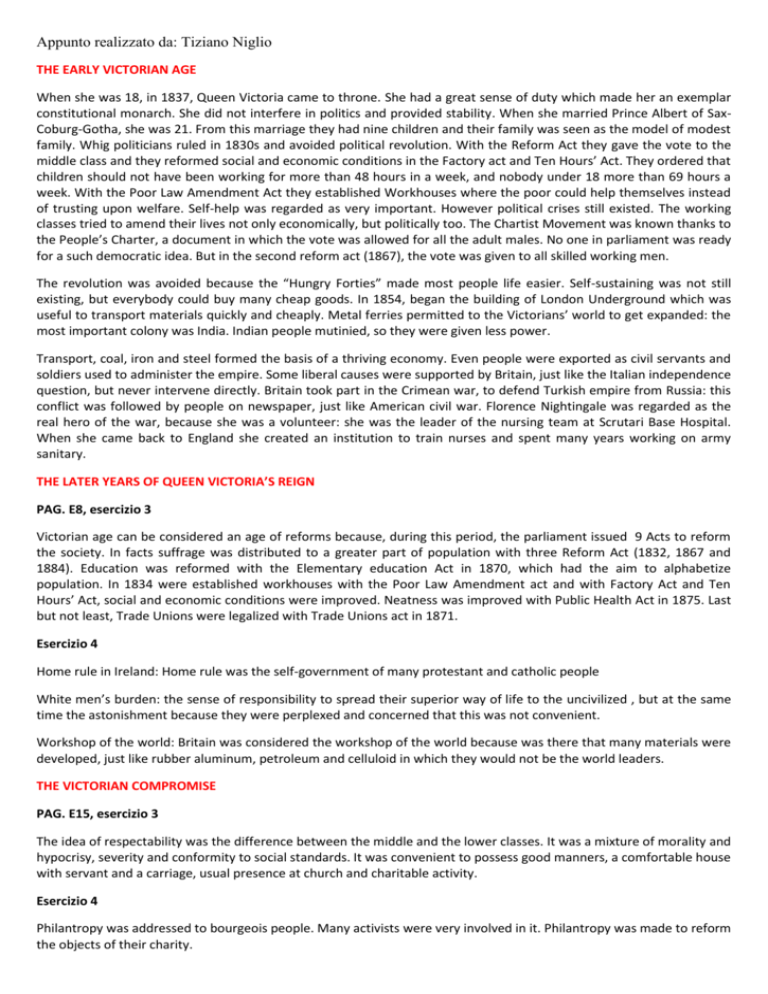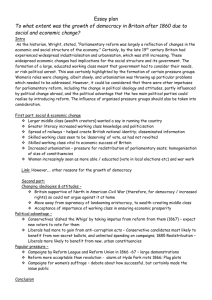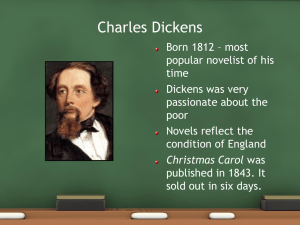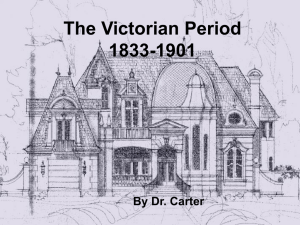Appunto realizzato da: Tiziano Niglio THE EARLY VICTORIAN AGE
advertisement

Appunto realizzato da: Tiziano Niglio THE EARLY VICTORIAN AGE When she was 18, in 1837, Queen Victoria came to throne. She had a great sense of duty which made her an exemplar constitutional monarch. She did not interfere in politics and provided stability. When she married Prince Albert of SaxCoburg-Gotha, she was 21. From this marriage they had nine children and their family was seen as the model of modest family. Whig politicians ruled in 1830s and avoided political revolution. With the Reform Act they gave the vote to the middle class and they reformed social and economic conditions in the Factory act and Ten Hours’ Act. They ordered that children should not have been working for more than 48 hours in a week, and nobody under 18 more than 69 hours a week. With the Poor Law Amendment Act they established Workhouses where the poor could help themselves instead of trusting upon welfare. Self-help was regarded as very important. However political crises still existed. The working classes tried to amend their lives not only economically, but politically too. The Chartist Movement was known thanks to the People’s Charter, a document in which the vote was allowed for all the adult males. No one in parliament was ready for a such democratic idea. But in the second reform act (1867), the vote was given to all skilled working men. The revolution was avoided because the “Hungry Forties” made most people life easier. Self-sustaining was not still existing, but everybody could buy many cheap goods. In 1854, began the building of London Underground which was useful to transport materials quickly and cheaply. Metal ferries permitted to the Victorians’ world to get expanded: the most important colony was India. Indian people mutinied, so they were given less power. Transport, coal, iron and steel formed the basis of a thriving economy. Even people were exported as civil servants and soldiers used to administer the empire. Some liberal causes were supported by Britain, just like the Italian independence question, but never intervene directly. Britain took part in the Crimean war, to defend Turkish empire from Russia: this conflict was followed by people on newspaper, just like American civil war. Florence Nightingale was regarded as the real hero of the war, because she was a volunteer: she was the leader of the nursing team at Scrutari Base Hospital. When she came back to England she created an institution to train nurses and spent many years working on army sanitary. THE LATER YEARS OF QUEEN VICTORIA’S REIGN PAG. E8, esercizio 3 Victorian age can be considered an age of reforms because, during this period, the parliament issued 9 Acts to reform the society. In facts suffrage was distributed to a greater part of population with three Reform Act (1832, 1867 and 1884). Education was reformed with the Elementary education Act in 1870, which had the aim to alphabetize population. In 1834 were established workhouses with the Poor Law Amendment act and with Factory Act and Ten Hours’ Act, social and economic conditions were improved. Neatness was improved with Public Health Act in 1875. Last but not least, Trade Unions were legalized with Trade Unions act in 1871. Esercizio 4 Home rule in Ireland: Home rule was the self-government of many protestant and catholic people White men’s burden: the sense of responsibility to spread their superior way of life to the uncivilized , but at the same time the astonishment because they were perplexed and concerned that this was not convenient. Workshop of the world: Britain was considered the workshop of the world because was there that many materials were developed, just like rubber aluminum, petroleum and celluloid in which they would not be the world leaders. THE VICTORIAN COMPROMISE PAG. E15, esercizio 3 The idea of respectability was the difference between the middle and the lower classes. It was a mixture of morality and hypocrisy, severity and conformity to social standards. It was convenient to possess good manners, a comfortable house with servant and a carriage, usual presence at church and charitable activity. Esercizio 4 Philantropy was addressed to bourgeois people. Many activists were very involved in it. Philantropy was made to reform the objects of their charity.







